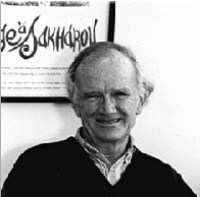Dern’s eyes snapped open.
…we’ll make damn sure there are no witnesses.
Those words drifted into his awareness as the Flare surged throughout his body, mending wounds, stimulating muscles, clearing the fog from his head. Pain diminished, aggression heightened, and a burning rage that had nothing to do with the Flare roared through his rejuvenated body like a whirlwind.
He shut his eyes, feigning the dead.
Heightened hearing picked up footfalls moving his way
Someone moaned…a plea for mercy…an assault rifle’s deafening report…no more pleas. Footfalls resumed, getting closer.
The weight of Ura’s corpse was draped across his chest.
Dern kept his eyes closed, ‘observing’ the hijacker’s movement through hearing, smell, the ever-subtle caress of air displacement.
The footfalls stopped in front of him. Dern opened his eyes. Five Star stood over him, but the hijacker’s attention was elsewhere.
Dern threw off Ura’s body and hopped to his feet, lightning fast. He knocked Five Star’s rifle aside with one hand and gripped the hijacker’s neck with the other. Powerful fingers sunk into flesh. Dern snatched his arm back, tearing a bloody chunk out of Five Star’s throat. The hijacker emitted a death gurgle, blood pumping from his fatal wound like water from a busted pipe.
Dern grabbed the dead man’s RI4 and turned it on the next nearest hijacker. He triggered the weapon once, sending a round drilling through the man’s left eye. He fired twice more, taking down two additional foes. He swung the rifle around and ducked. A hijacker twenty yards on his opposite side had opened fire. Dern timed the reaction perfectly and unleashed two shots even as a stream of flachettes whisked inches above him. The hijacker flailed backwards with a pair holes in his heart. Two men behind him received headshots before they could raise their weapons.
Three hijackers were left standing at the far end of the corridor. They opened fire.
Dern dove forward, his weapon spitting rapid fury.
A hijacker was lifted off his feet as bullets cleaved diagonally across his torso.
The remaining hijackers turned tail, firing wildly behind them.
One did not make it far. Dern planted a round in the back of his neck, pulverizing the spine. The criminal dropped like a bag of rocks.
The last hijacker turned a corner at the corridor junction before Dern could target him. He considered giving chase, but thought better of it. He needed to get to the cargo section.
But first…
Dern checked Ura, Cyril and Theresa for life signs. He needn’t have bothered. Jagged holes riddled their bodies. He surveyed the corridor. Every passenger…dead. Teeth gritted, he massaged his head in anguish. All dead. He looked into Ura’s lifeless eyes. “I was too optimistic.” He reached down, applied a feather light touch to her eyelids and closed them.
He backed away, taking a final, sweeping glance at the carnage before him. The sight boiled away anything inside him that could have…would have remotely inclined him to mercy toward the rest of this vicious gang. He turned and headed for the nearest elevator with purpose branded into his soul.
Turbines revved to life as the sleeper ship’s propulsion transitioned from vacuum to an atmospheric environment. Routh’s ramshackle arrangement of squat non-descript buildings appeared like rusted ornaments on the view screen. With the close of distance, the settlement buildings took on more distinctness.
Tunnal beamed. Routh wasn’t pretty by any standard or stretch of the imagination, but it represented the conclusion to a very profitable venture. That alone made the place glow bright as a sun reflective gem in the hijacker’s avaricious perception.
“Come in, Tunnal!”
The hijack leader winced at the blaring transmission through his subdermal. He pressed the implant, his whispered response weighted with irritation. “What are you trying to do, blast my ear off? What is it?”
“This is Hugens, Boss. We have a situation!”
Hugens sounded breathless.
“What kind of situation?” Tunnal prodded, his irritation heating to anger.
“It’s…it’s one of the passengers…the one who was on the bridge…he somehow grabbed a weapon, shot us up to hell. Everybody’s down ‘cept me.”
It took every ounce of self-control for Tunnal to contain his reaction. He clenched a fist as red rage tinted his vision. “What about the passenger. Is he dead? Tell me one of you fuckups took him down!”
A heavy pause. Tunnal could almost hear Hugens rattling in his worthless boots. “Boss…we tried. He moved so fast. And the way he handled a weapon…it was as if we were facing a demon instead of a man!”
Tunnal breathed in deep, letting out a slow, calming breath. He dared not call up display footage of the stasis level for fear of panicking the crew. The ship needed to land first. This could still be contained. “Standby,” he ordered.
He called two other hijackers over, Josik and a bald, sinewy woman called Chain.
“One of the passengers laid our people out,” he told them in a low voice.
Chain and Josik’s eyes widened. They exchanged glances, but otherwise kept cool.
“Hook up with Hugens, comb this ship, find that loose end. If you can capture him alive do it. If not burn him and burn him good!”
The pair nodded resolutely and walked away.
He’ll get his due, Tunnal thought. The deaths of his comrades rankled him, dashed his pride. He’d built up quite a rep as a person to be feared. And those who worked for him were to be equally feared. Anyone who could so easily erase half his force threatened to seriously undercut that reputation. I hope you can be captured alive. I’ll make such an example of you, that you’ll beg me to cut your throat and be done with it!
Dern stepped off the elevator four levels below. He kept his acquired RI4 raised to firing position, though he was reasonably certain no hijackers would be lurking about in this area…yet. The cargo hold was vast, cavernous, easily the largest section in the ship. Passengers relocating to another world typically never traveled light. On this trip, Dern was an exception.
After a minute or two of moving through the section’s aisles, checking storage shelves, he spotted his possessions. A small duffel bag stuffed with clothing, mementos, and a few old fashioned books, and a larger two-wheeled metal container with an extendable handle. The container held an item essential for his employment on Ceres 3. It could not be replaced like the contents of his smaller bag.
He slid the container off a waist high shelf and set it on the deck. On the container’s side were a keypad and a display strip. Dern tapped a string of numerals on the pad and corresponding numbers flashed on the strip. A clicking sound emanated from the container followed by a low hiss. The container’s lid opened automatically. Dern reached inside and pulled out a garment that felt like an odd meld of rubber and velvet.
He unfurled the garment, laying it out on the deck and then stripped down to his shorts. Dern put on the garment and waited briefly as it conformed snuggly to every contour of his physique. The garment covered him from head-to-toe, leaving only the front of his face visible. Dern pressed a wrist tab and the garment instantly solidified to a metal hard density. Yet it was elastic enough to be of no hindrance to the wearer’s movements. Layers of interlocking plates unraveled across the armor. A smoke-gray visor slid over his face connecting to a throat guard. He breathed in a lungful of the suit’s artificial air and flexed his arms testing its articulation.
Twelve IV nodes located at various points on the suit from chest to thighs punctured his skin. A testosterone solution, referred to as the Flare flowed through the nodes into his bloodstream, boosting the amount of Flare already present in his body.
He hadn’t felt this strong, this powerful in so long. The feeling bordered on intoxicating. And that was where Dern had to temper himself. It was all too easy to succumb to the rapturous headiness generated by the Flare. It could produce overconfidence in one’s abilities and overconfidence led to recklessness, which inevitably led to ruin.
Dern intended to wield his vengeance with a steadiness and discipline forged by brutally intensive training. Very few human beings could successfully fend off the strain the Flare inflicted on their psyches. As Dern managed to clear his mind, he demonstrated why he was among that tiny number chosen to wear the suit.
Josik and Chain met Hugens at a section of the ship near the engine regulators. Hugens bore the shaken look of a man who’d seen too many ghosts. That had Josik concerned. He knew Hugens to be ruthless and fearless, not afraid to plunge into a fight. Unlike a whole lot of lowlifes who could be guaranteed to exhibit bravery only when their foes were unarmed, preferably bound and gagged.
Chain threw an openly contemptuous glance Hugen’s way.
Josik caught the look and hid a smile. He liked a woman with balls.
“He sent just you two?” Hugens said with a discouraged frown.
“Yeah, just us,” Josik replied impatiently. “Let’s not waste time. There’s one area of the ship where this passenger is likely to go, the cargo section. It’s a great place to hide. That’s where we’ll flush him out.”
“That’s quite some speculating,” Hugens remarked skeptically. “This guy could be anywhere.”
“Well wherever he is,” said Chain, holding up a black palm size cube. “He’ll get a dose of this.”
Hugens eyed the CX charge in the woman’s hand and smiled. “Now we’re talking.”
Josik brushed past the pair. “Let’s get to the cargo hold and end this.”
Dern linked into Interface mode, activating the suit’s sensory enhancements. Suddenly the dimly lit cargo section appeared bright and vivid, as if someone had wiped a coating of grime from his face plate. He reached into the suit container and pulled out a gold colored metal bracelet. He wrapped the bracelet around his right wrist, clicking latches in place to secure it and then flexed his forearm. The bracelet sent a tingle of vibration racing through Dern’s arm up to his shoulder. He gave a tiny nod of satisfaction.
Hostile Interdiction Emitter. Ready. Dern had never ruled out having to use the weapon at some point in his new career. Ceres 3 was a largely crime free colony (emphasis on largely). He just never imagined having to deploy it so soon, before he even reached the planet. Now the question remained: would he ever get there?
Low beeping interrupted his musing. He had company. Dern snapped shut his container and darted swiftly down the aisle. A sensor display over his left eye revealed three sources of body heat moving into the cargo section.













